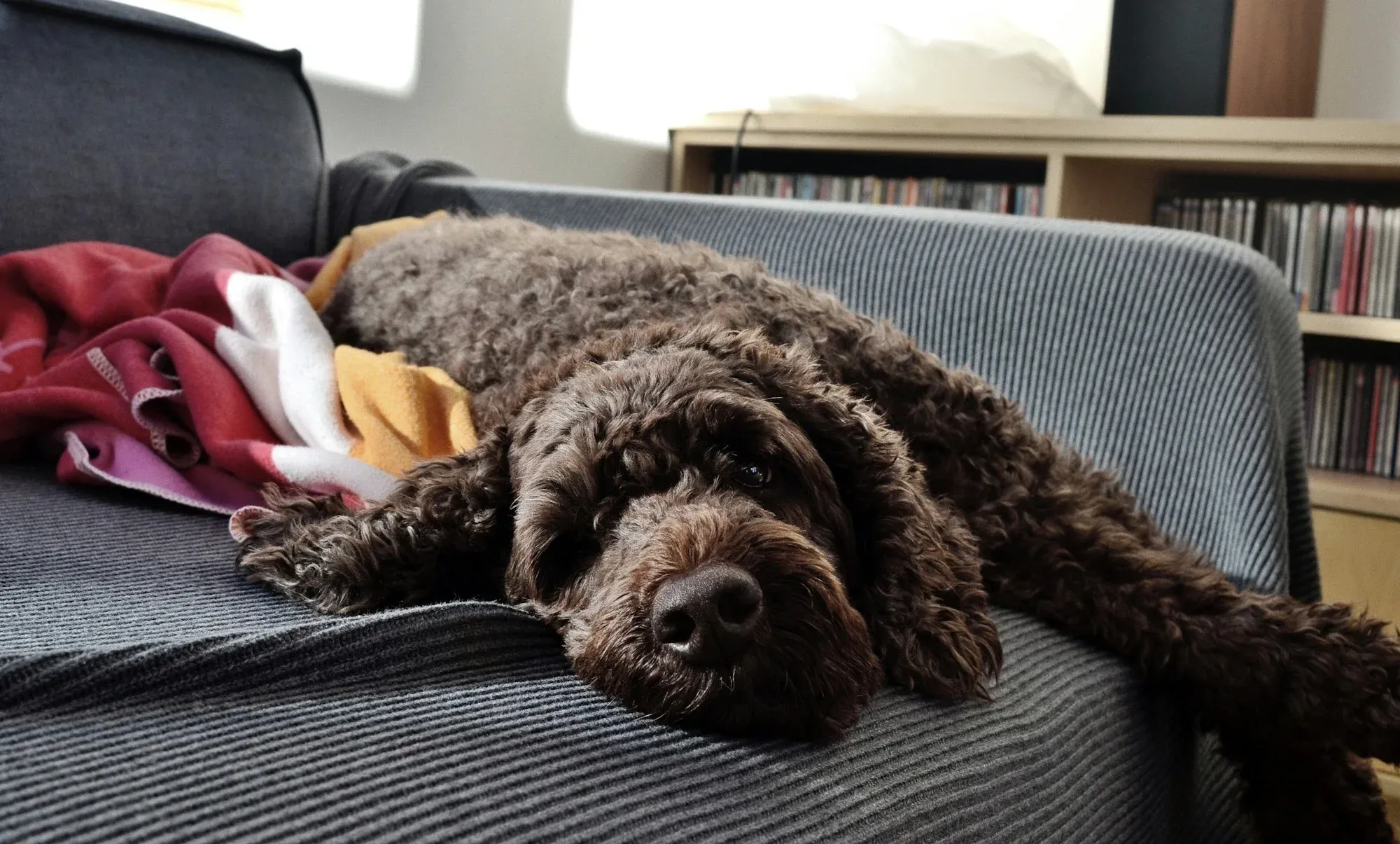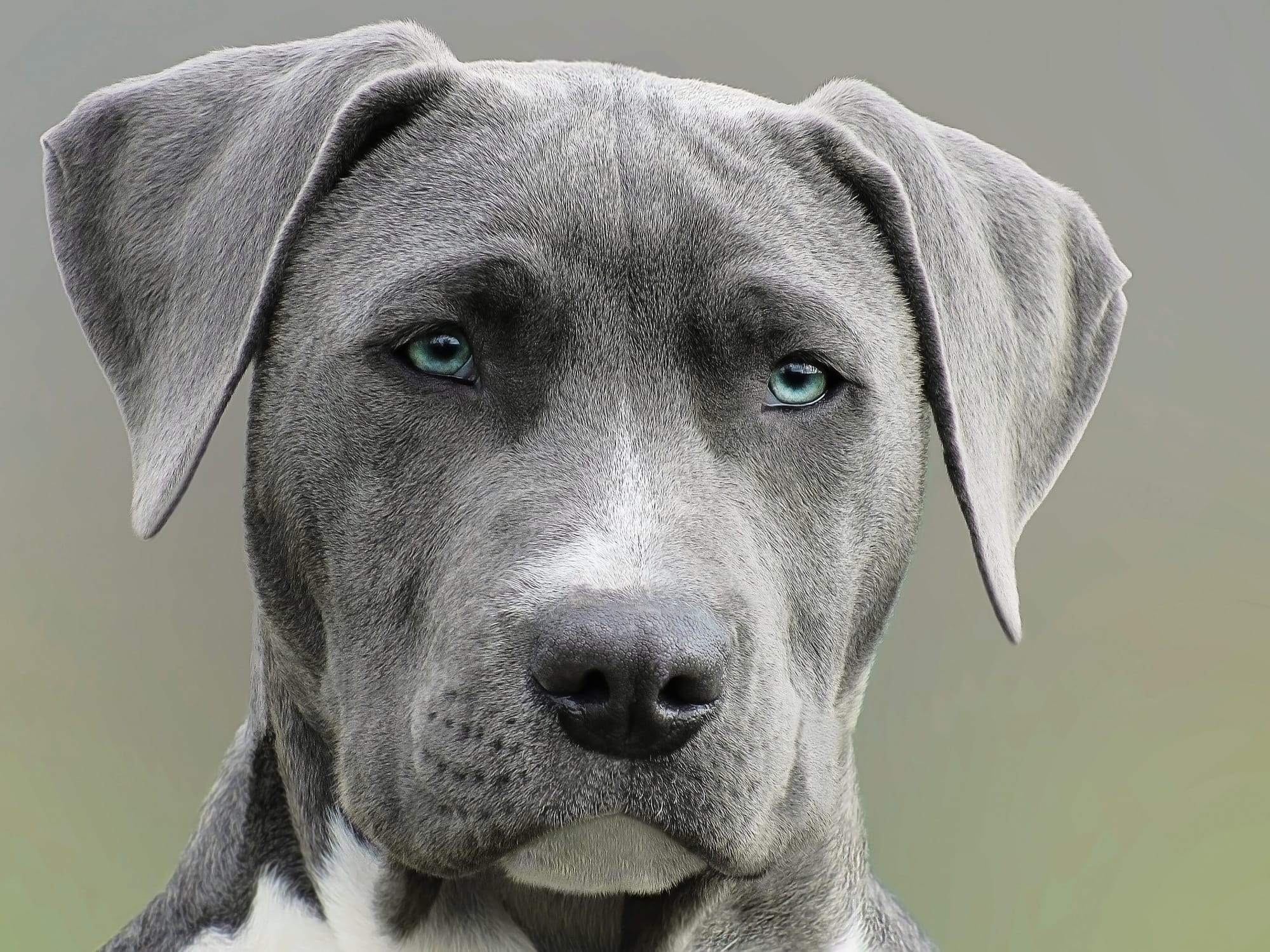The Red Husky is a strikingly beautiful breed of dog that has captured the hearts of many dog lovers. Known for their unique red coat and piercing blue eyes, they are often mistaken for their close relative, the Siberian Husky. However, the Red Husky is a diverse breed with unique characteristics that set them apart from their more well-known cousin.

One of the most notable features of the Red Husky is their stunning coat. Their fur ranges from a deep red to a more delicate, coppery shade, and is often accented with white markings. This coat is not only awesome but also serves a practical purpose in their native cold climates. The thick fur permits to insulate them from the cold, making them well-suited for living in areas with harsh winters.
Despite their special appearance, the Red Husky is not just a cute face. They are clever, loyal, and highly trainable, making them a perfect choice for families or individuals looking for a companion that is both lovely and easy to train. With their unique combination of beauty and brains, it's no wonder that the Red Husky is becoming an increasingly popular breed among dog lovers.
Secure Your Red Husky's Adventures with Fi Dog Collar — Use Code HUSKY20 for $20 Off
Ensure the safety and happiness of your vibrant Red Husky with the Fi Dog Collar. Perfectly designed for the adventurous spirit of your husky, this collar integrates advanced GPS tracking with a robust geofence feature, allowing you to set safe boundaries through the intuitive Fi app.
Keep track of their high energy escapades and ensure they stay within safe limits, no matter where the adventure leads. Monitor their location in real-time and receive instant alerts if they wander off. Embark on every adventure with confidence. Use code HUSKY20 for $20 off your purchase, and explore the great outdoors with peace of mind knowing your Red Husky is safe and secure.
Breed Overview

History and Origin
The Red Husky is a breed of dog that originated from the Siberian Husky. Siberian Huskies were bred by the Chukchi people of Siberia to be sled dogs. They were used to pull sleds in the harsh, cold conditions of Siberia. The Chukchi people bred these dogs for their endurance, strength, and ability to work in a team.
In the early 1900s, Siberian Huskies were brought to Alaska to compete in sled dog races. The breed gained popularity in the United States after the Serum Run in 1925, where a team of sled dogs, including the famous Balto, delivered medicine to the town of Nome, Alaska during a diphtheria outbreak.
The Red Husky is a variation of the Siberian Husky breed. They are known for their unique red coat, which is due to a recessive gene. Red Huskies have the same characteristics as Siberian Huskies, including their high energy, intelligence, and loyalty.
Breed Popularity
Red Huskies are a relatively rare breed, but their popularity has been increasing in recent years. They are recognized by the American Kennel Club (AKC) and are classified under the Working Group.
Red Huskies are intelligent and highly trainable, but they require a lot of exercise and mental stimulation. They are not recommended for first-time dog owners or for those who live in small apartments.
Overall, the Red Husky is a beautiful and loyal breed that is well-suited for active owners who have the time and energy to provide them with the exercise and attention they need.
Physical Characteristics
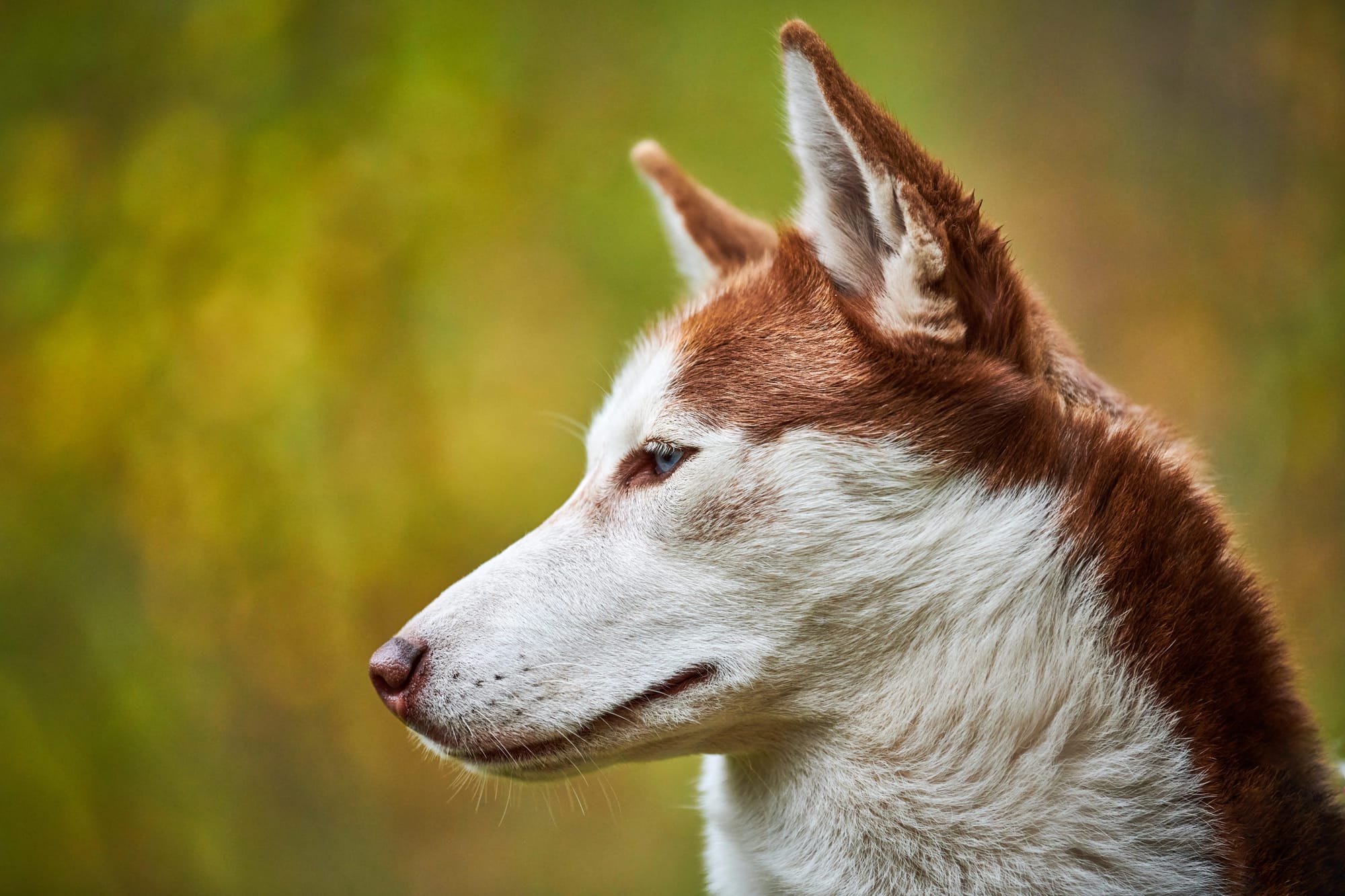
Coat and Color
The red husky is a breed of Siberian Husky with a double coat that is thick and soft. The coat comes in various colors, including red, brown, and copper. However, the red coat color is the most popular and sought-after. The coat of the red husky is made up of two layers: the topcoat and the undercoat. The topcoat is long and straight, while the undercoat is soft and dense. This double coat provides insulation, keeping the dog warm in cold weather.
Size and Build
The red husky is a medium-sized dog with a height of 20-24 inches at the shoulder and a weight of 35-60 pounds. They have a lean and athletic build, with a deep chest and a level back. The legs are straight and strong, allowing them to move quickly and efficiently.
Distinctive Features
The red husky has several distinctive features, including blue eyes and a bushy tail. Their eye color can vary, but blue is the most common. The tail is thick and furry, carried in a sickle shape over the back. The ears are triangular and set high on the head.
Overall, the red husky is a beautiful and athletic breed with a distinctive appearance. Their coat, colors, and distinctive features make them stand out from other breeds.
Temperament and Behavior
Personality Traits
Red Huskies are known for their unique personality traits. They are independent, intelligent, and loyal dogs that can be friendly towards their owners and strangers. These dogs are full of energy and love to play, but they can also be stubborn at times. Red Huskies are affectionate towards their owners and enjoy spending time with them.
Behavioral Tendencies
Red Huskies have a mischievous nature and can be quite vocal, especially when howling. They have a high prey drive and like to chase small animals, so it is required to keep them on a leash when outside. These dogs can be quite stubborn, so early training and socialization are crucial. Red Huskies are known for their playful nature, but they can also be quite vocal when they want attention.
Thus, Red Huskies are intelligent, loyal, and playful dogs that require a lot of exercise and attention. They can be stubborn at times, but with valid training and socialization, they can make great pets for active households.
Health and Care
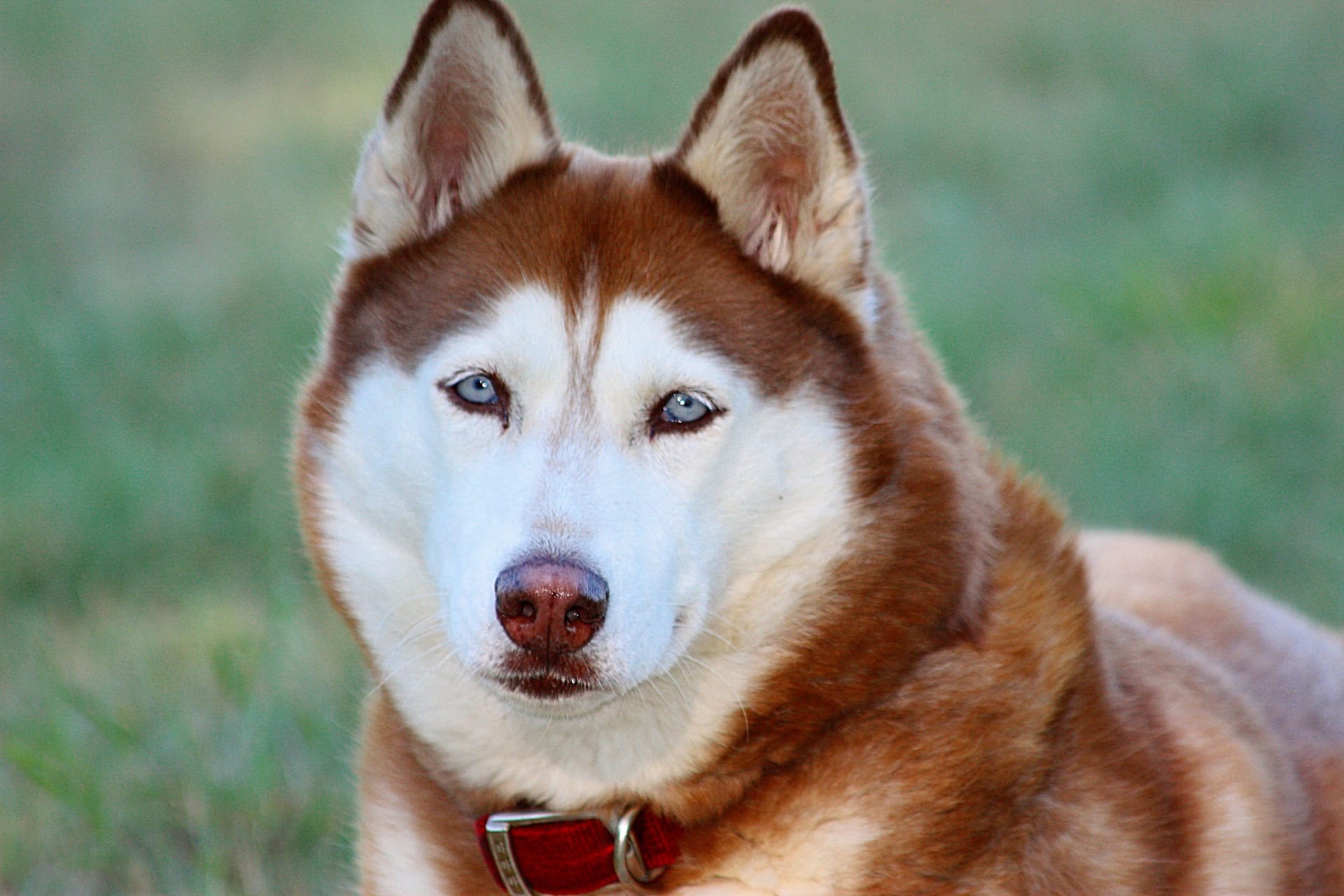
Common Health Issues
Red Huskies are generally healthy dogs with a lifespan of 12-14 years. However, like all breeds, they are prone to specific health problems. One of the most common health disorders in Huskies is hip dysplasia, which is a genetic condition that affects the hip joints. It can lead to arthritis and mobility issues if left untreated. Another common issue is cataracts, which can cause blindness if not treated in time. It's important to schedule regular check-ups with a veterinarian to catch any potential health concerns early.
Grooming Needs
Red Huskies have a thick double coat that needs regular grooming to prevent matting and tangles. They shed heavily twice a year, which is known as "blowing coat." During this time, daily brushing is necessary to keep shedding under control. Regular nail trimming is also critical to prevent overgrowth and discomfort.
Fi GPS Tracking Dog Collar
Fi GPS tracking Dog Collar is ideal for helping keep your dog in the best shape. It enables you to track the dog's exertion levels and steps, which you can compare to other dogs of similar breeds within your neighborhood.
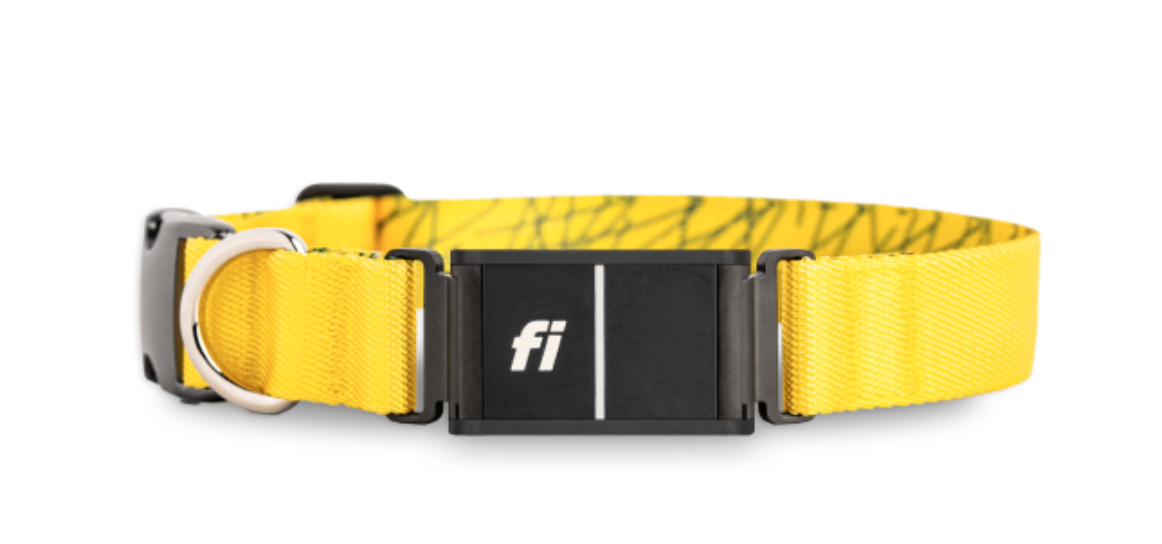
These tracking collars come in four core colors: pink, blue, gray, and yellow. They're a perfect fit for dogs whose neck sizes range between 11.5 and 34.5 inches. With its GPRS tracking feature, you'll instantly get a phone alert if your pup friend ever gets out unexpectedly.
Exercise and Activity
Red Huskies are highly energetic dogs that require plenty of exercise and activity. They were originally bred as working dogs and thrive in environments where they have a job to do. Daily walks and runs are essential to keep them physically and mentally stimulated. Huskies also enjoy activities like hiking, swimming, and playing fetch.
Hence, taking care of a Red Husky requires a dedication to their physical and mental well-being. Routine check-ups with a veterinarian, grooming, and plenty of exercise are key to keeping them healthy and happy.
Training and Socialization
Training Techniques
Training a red Husky can be a challenging task, but with patience and consistency, it can be a rewarding experience for both the owner and the dog. Positive reinforcement techniques such as treats, praise, and toys are effective ways to train a Husky. This breed responds well to rewards and is known for being wise and eager to please.
It is essential to start training a Husky at a young age and to be consistent with commands. Huskies have a strong spirit and can be stubborn at times, so it is vital to establish yourself as the pack leader. Consistency and repetition are key to successful training.
Interactive games such as fetch and hide-and-seek can also be used as training tools to improve a Husky's attention and obedience. These games can help keep a Husky mentally stimulated and physically active, which is vital for their overall well-being.
Socialization Importance
Socialization is crucial for a red Husky to develop good behavior and a friendly disposition towards other animals and people. It is recommended to socialize a Husky from a young age to prevent them from becoming aggressive or fearful towards strangers or smaller animals.
Huskies are known for their loyalty, but they can also be protective of their owners and territory. Proper socialization can help prevent any unwanted behavior towards strangers or other pets.
It is essential to expose a Husky to different environments, people, and animals to help them become well-rounded and adaptable. Socialization can be achieved through puppy classes, dog parks, and periodic interaction with other dogs and people.
Hence, training and socialization are crucial aspects of owning a red Husky. Positive reinforcement techniques and interactive games can be effective training tools, while socialization can help control unwanted behavior towards strangers or other pets.
Breed-Specific Considerations
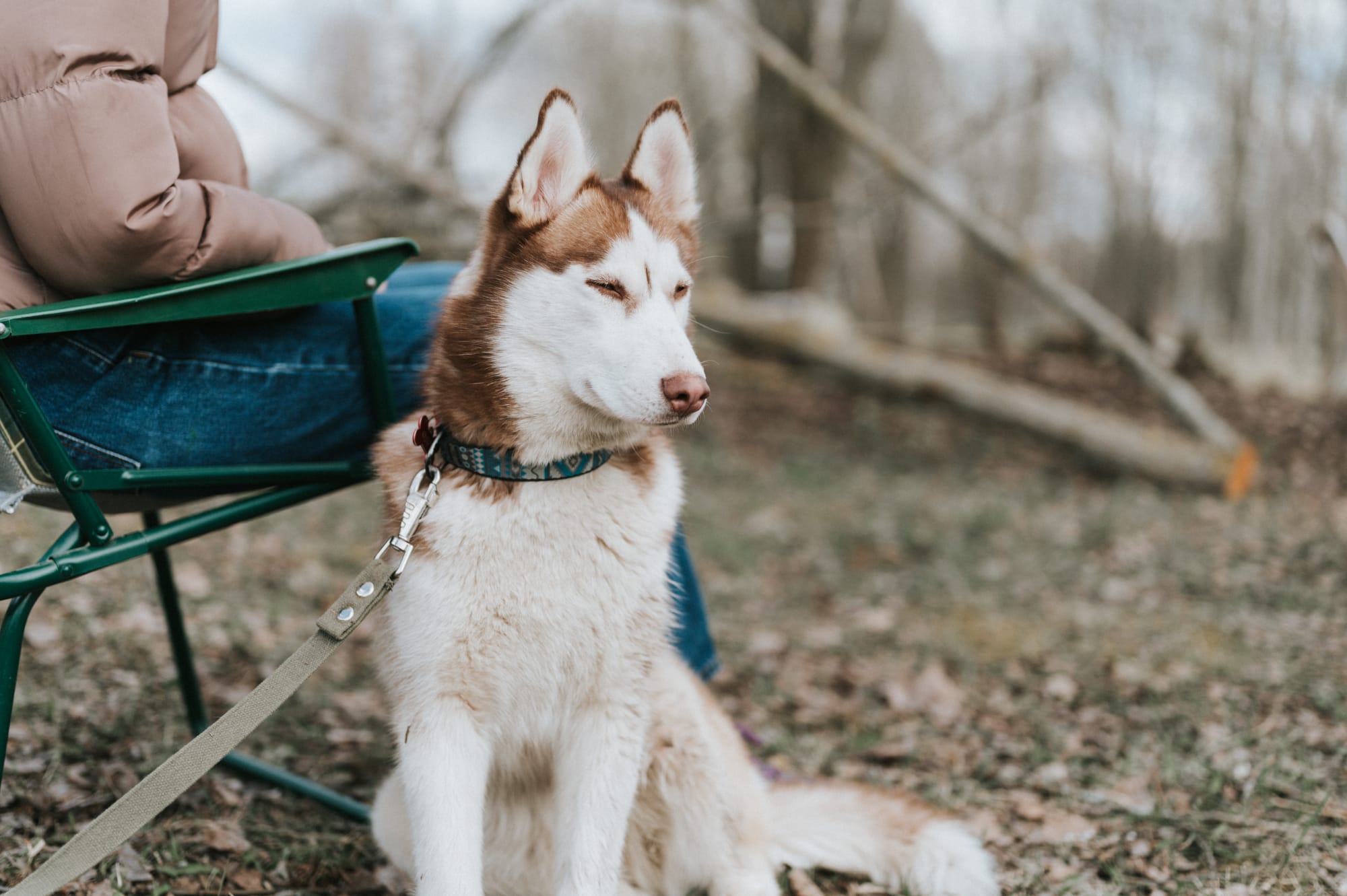
Living Conditions
Red Huskies are known for their high energy levels and need for exercise, which means they are best suited to homes with big yards or access to open spaces where they can run and play. They are not well-suited to apartment living or small homes without adequate space to move around.
It's important to note that Red Huskies are also famous for their love of digging and may cause damage to a yard if not properly trained. Providing them with designated digging spots or keeping them on a leash during outdoor time can help mitigate this behavior.
Suitability for Families
Red Huskies can make great family pets, but it's vital to consider their energy levels and need for exercise when bringing them into a household with kids. They require a lot of attention and may not be suitable for families who are unable to meet these needs.
However, when properly trained and socialized, Red Huskies can be excellent companions for children and provide endless entertainment and love.
Hence, Red Huskies require a dedicated and experienced owner who is willing to supply them with the exercise, training, and companionship they need to thrive. With the proper care and attention, they can make awesome additions to any household.
Purchasing and Adoption

Choosing a Red Husky
When looking to purchase or adopt a red husky, it is needed to consider the breed's energetic nature. Red husky puppies are known for being active and require plenty of exercise. It is suggested that potential owners have a large yard or access to outdoor spaces where their husky can run and play.
Another factor to consider is the price. Red husky puppies can be expensive, with prices ranging from $800 to $1500. It is important to do research and compare prices from reputable breeders or adoption agencies before making a purchase.
Reputable Breeders and Adoption
When looking for a red husky, it is demanded to find a reputable breeder or adoption agency. A reputable breeder will provide documentation of the puppy's health and lineage and likewise offer a guarantee for any genetic health issues.
Adoption agencies can also be an excellent option for those looking to give a red husky a loving home. These agencies often have red husky puppies available for adoption and can deliver information on the dog's temperament and energy level.
It is important to note that red huskies are often mistaken for Alaskan Malamutes, which can lead to confusion when searching for a specific breed. It is recommended to do research and make sure the breeder or adoption agency is knowledgeable about the breed and can provide accurate information.
Lastly, it is paramount to note that red huskies shed heavily twice a year. Potential owners should be prepared for regular grooming and shedding maintenance.
Final Thought
The Red Husky is a beautiful and unique breed that can make an ideal addition to the right family. With proper care, training, and socialization, they will be loyal and loving companions for many years.
